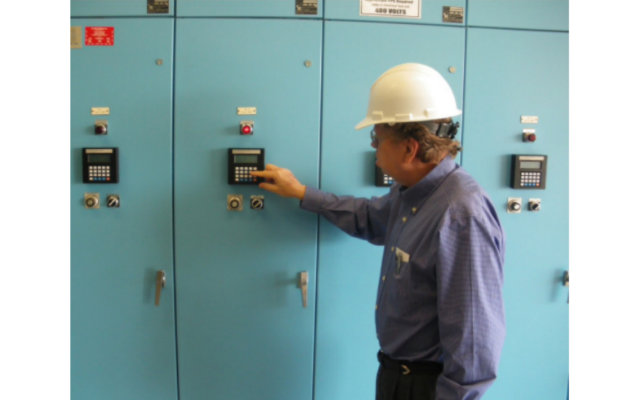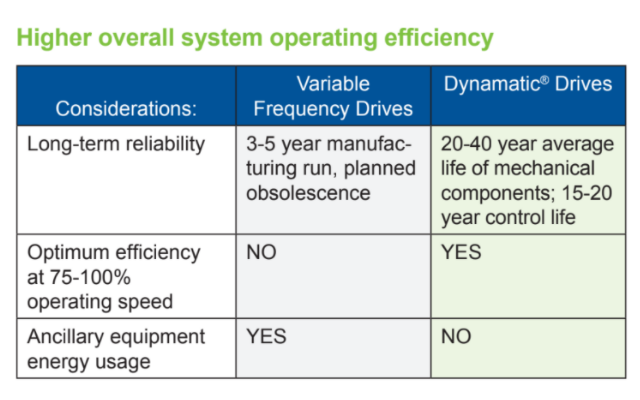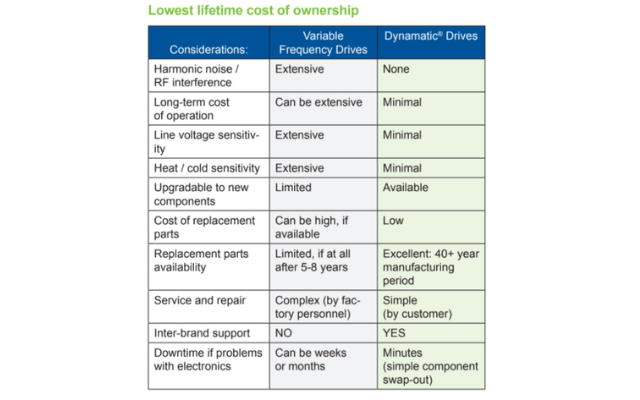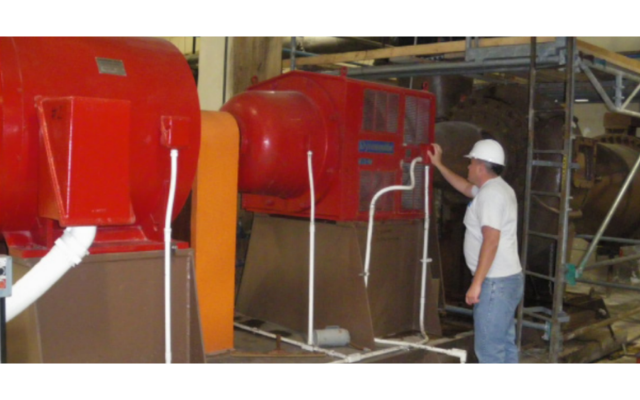Location: Lemay Pump Station, St. Louis, MO
Background: Dynamatic® electromagnetic adjustable speed drives have performed for over two decades in higher horsepower wastewater pumping applications. By upgrading a drive’s original control from analog to digital, municipalities are combining proven drive reliability and economy with advanced, digital system programming and monitoring.
Challenges: The need for faster and easier drive system controls, including distributed control and SCADA integration, prompted Lemay Pump Station management to consider alternative systems, such as the latest variable frequency drives on the market. However, as management studied the challenge further, the conversion from Dynamatic® drives to VFDs posed a significant range of added costs. This compelled the municipality to more carefully evaluate their application requirements.
Results: When a cost/performance evaluation was conducted across the municipality’s 200HP and larger electromagnetic pump-drive systems, management determined that these applications would be best served by upgrading all existing Dynamatic® drives from analog-based controls to new digital controls. Specific cost advantages for the controls upgrade have included the avoidance of VFD capital costs and installation costs ranging into hundreds of thousands of dollars. The municipality reports that since the upgrade began in 2006, the Dynamatic drives have continued to reliably meet pump station performance needs, with the added advantage of digital programming and monitoring.

Vince Stollhans, Assistant Manager Pump Station Division_Instrumentation Photo Courtesy Lemay Pump Station
User Comments: “We have eddy-current drives that are fifty years old and I have never replaced one with a VFD. It’s a simple device and that’s why the clutch lasts a long time. Adding to that, the new digital controls we have purchased have been reliable, compact and cost-effective.”
Trained as an electrical engineer, Vince Stollhans is a pump station instrumentation manager who is keenly interested in finding practical, cost effective ways to apply technology to wastewater process improvement. For several non-submersible, higher horsepower pumping applications, Stollhans has sought to reduce capital costs and installation costs by upgrading the pumping station’s Dynamatic eddy-current drives to digital controls.
“When we evaluate replacing an eddy-current clutch with a variable frequency drive, we do not want to replace a technology that works. So we look at the application. For dry pit pumping applications, especially where we don’t have 24-hour operation, we’ve looked at our technology options versus the existing eddy current clutch. To begin with, a VFD requires more physical space. A larger horsepower VFD can take up ten feet of space, versus fitting into a cabinet. Removing the eddy-current clutch and re-coupling the motor is another expense. For a particular application, we may be talking about a $30,000 to $80,000 VFD, versus a $5,000 digital control upgrade. The total cost for time and material could be $50,000 to $80,000 versus $10,000 to $15,000 per unit. This is in the range of 200 to 700 horsepower, up to 4160 volt.
“The objective, in the long run, is for us to modernize a process, increase reliability, make it available and get the information we need,” Stollhans said.
Dynamatic® Drives: How they work
A VFD uses AC-to-DC voltage conversion, high-frequency sampling, and a powerful inverter in a large electronics rack to alter the speed of and to supply the operating voltage to an AC motor. A Dynamatic® drive uses eddy-current technology consisting simply of a constant speed AC induction motor and a magnetic clutch speed driven by a small analog or digital controller. The clutch uses an eddy-current coupling to vary the speed of an attached output shaft. DC voltage applied to a field coil in the clutch produces a magnetic field, which generates an attracting force to the inside of a hollow iron drum. The amount of power available is determined by the size of the motor, which can range from relatively small to motor, 4000 HP or more.
 Efficiency Considerations:
Efficiency Considerations:
At maximum clutch coupling, the total efficiency for Dynamatic drives is just below that of the motor alone. A Dynamatic drive’s control unit supplies voltage to the clutch’s coil and only requires 2% or less of the drive’s total power. As the process speed reduces, the losses in an eddy-current clutch rise in proportion to the slip. Relative to VFDs, this creates an efficiency crossover point between 75% and 80% of motor base speed. Above this crossover point, the Dynamatic drive is more efficient. Below this point, the VFD makes up for its initially higher control losses and becomes the better efficiency choice.
 Dynamatic Drive Advantages:
Dynamatic Drive Advantages:
Dynamatic drives have an inherent long-term reliability advantage and function well in both adverse operating conditions and remote locations. Cooling, power management, and maintenance are minor and include only those service processes required for stand-alone AC induction motors. For systems that operate at 75 to 80% of base speed or higher a majority of the time, better efficiency is also a benefit.
 Parts interchangeability and the availability and ease of replacements and upgrades make Dynamatic drives a great long term investment. Maintenance costs are low and can be completed by facility staff.
Parts interchangeability and the availability and ease of replacements and upgrades make Dynamatic drives a great long term investment. Maintenance costs are low and can be completed by facility staff.





Comments